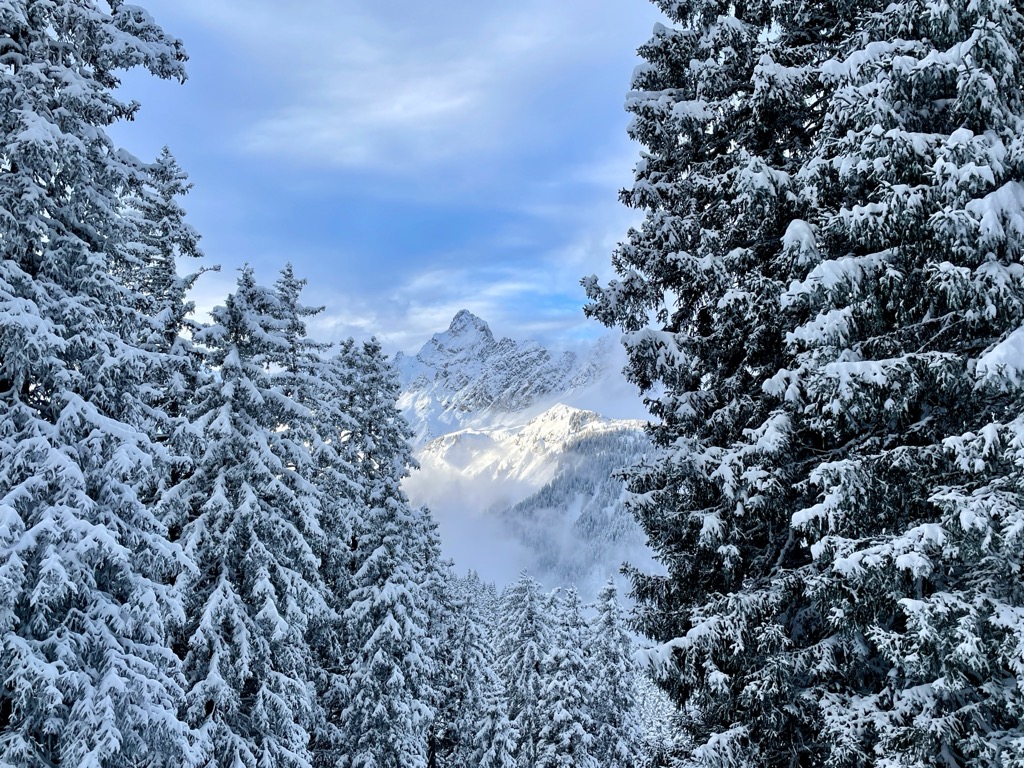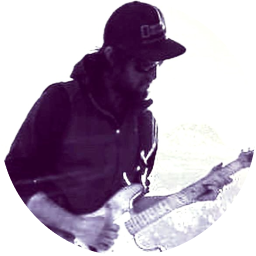The Rätikon Alps' Highest Summit is Perfect for Adventure-Seeking Families
By Sergei Poljak
Heidi’s Schesaplana
Though it hosts no ski resort or glamorous village at its base, Schesaplana has possibly the most name recognition in the Alps after Mont Blanc and Matterhorn. How can that be? Well, Schesaplana is featured prominently in the 1880 children’s book Heidi, a global sensation estimated to have sold over 50 million copies. That makes it the second most popular children’s book (after Le Petit Prince) and ranks it somewhere around the 20th best-selling book ever. The story of Heidi has transcended its pages, spawning numerous sequels, movies, and television shows in dozens of languages; interestingly, the pastoral theme has proved particularly resonant with the Japanese.
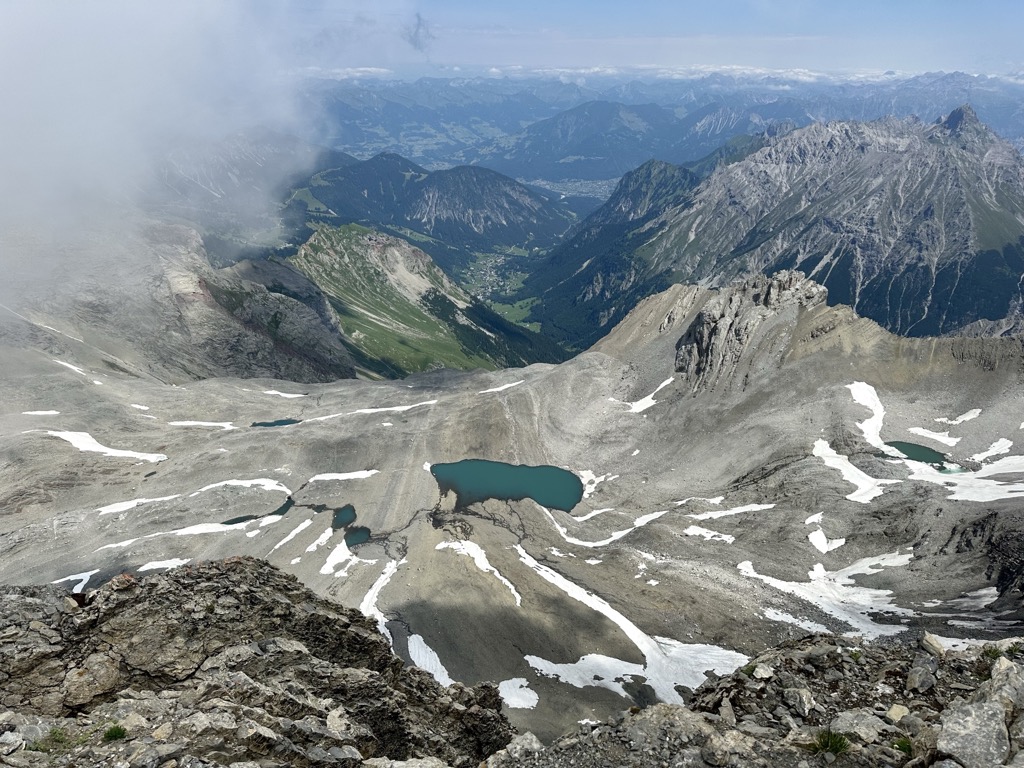
Heidi tells the tale of a young girl who goes to stay with her grandfather following the tragedy of her parents' deaths. Sent off to live in a small Swiss village, she makes friends and becomes ensconced in the simple rhythm of village life. Schesaplana is one of two named mountains in the book (the other is Falknis, on the border of Switzerland and Liechtenstein). Here, Heidi and her friend Peter located medicinal herbs for Peter’s goats.
After a few years, she returns to the city to care for a disabled girl named Klara. While they form a powerful bond, it becomes clear that Heidi cannot cope with city life. She returns to her small Swiss village.
Upon visiting Heidi, Klara’s doctor sees an opportunity for Klara to benefit from spending time in the countryside with her friend Heidi. Over the course of her summer in the Alps, Klara ultimately regains the ability to walk, albeit slowly and carefully.
The book is an ode to pastoralism at a time when the world was almost entirely pastoral. It holds even more significance now, as 74% of Europe’s population is urban or suburban; just 26% live in defined rural areas.

Singularly etched into children’s hearts, Schesaplana is the perfect itinerary for an adventurous family. The route is challenging, with 1,000 meters (3,300 ft) of elevation gain, but it is never more technical than just hiking. Like the character Klara, the children will likely be strained by the challenge but ultimately realize their inner strength. The magic of the story’s landscape coming to life will provide additional inspiration. Most importantly, the adventure could serve as a thoughtful perspective into the rural way of life, which is becoming a thing of the past.
Climbing Schesaplana
Hiking season is already here, and it’s time to start planning. Schesaplana is not technical and offers an excellent variety of scenery and experiences on the climb to the summit.
The Rätikon Alps separate Switzerland from Austria and are part of the tiny European nation of Liechtenstein. Although it’s not a 3,000-er, Schesaplana (2,964 m / 9,724 ft) is the highest point of the Rätikon subrange, which gives some importance to its summit. With 815 meters of topographical prominence, the summit views are expansive (although it can often be cloudy).
Because it has no technical aspect and features a cable car and two mountain huts along the way, the trail is popular among families with children who want an adventure.
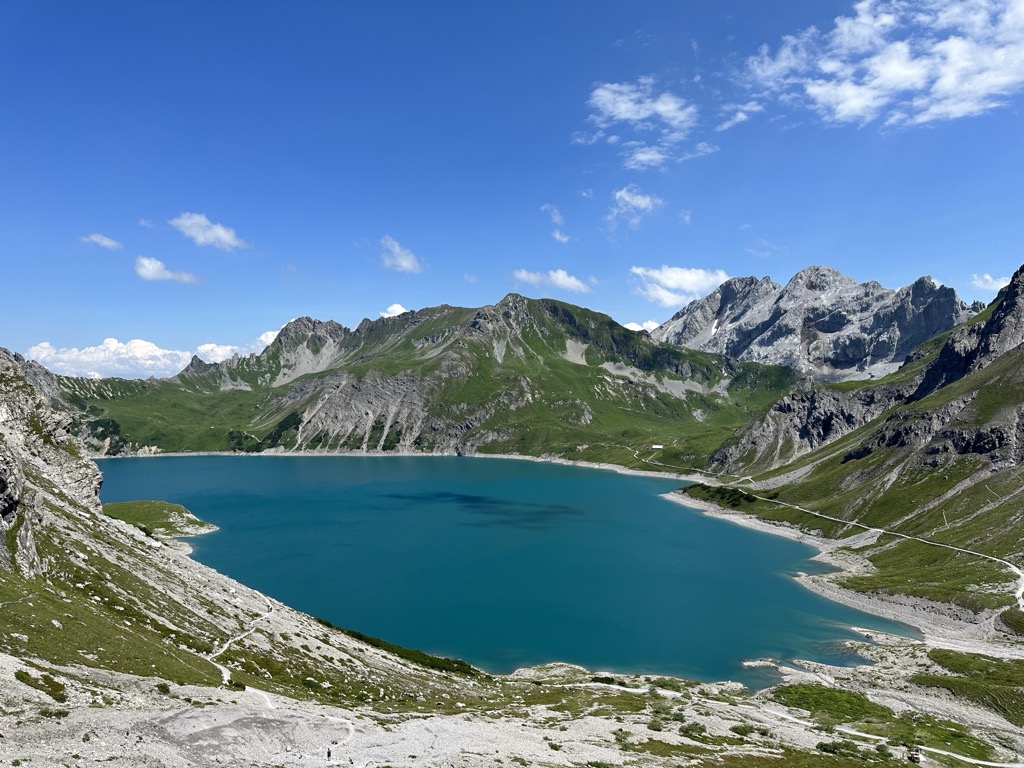
Lünerseebahn Cable Car
The journey starts with a ride up the Lünerseebahn Cable Car. The cable car opens for the summer on May 18th, from 8 a.m. to 5 p.m. daily. The ride shaves off 400 meters (1,340 ft) of climbing from the itinerary, and there’s nothing like a cable car ride to get the kids stoked. Nevertheless, if you want to save some euros or think 1,000 meters of climbing isn’t enough, you can start the route from the parking lot at the cable car's base.
Speaking of parking, you’ll want to get here early during the July and August high season as the lots will fill up quickly.
Ascent/descent Lünerseebahn tickets are €23 for adults and €13.80 for kids. It’s a hefty price to pay, especially with a big family. If you decide to do the hike instead, factor in at least a couple more hours into your day.
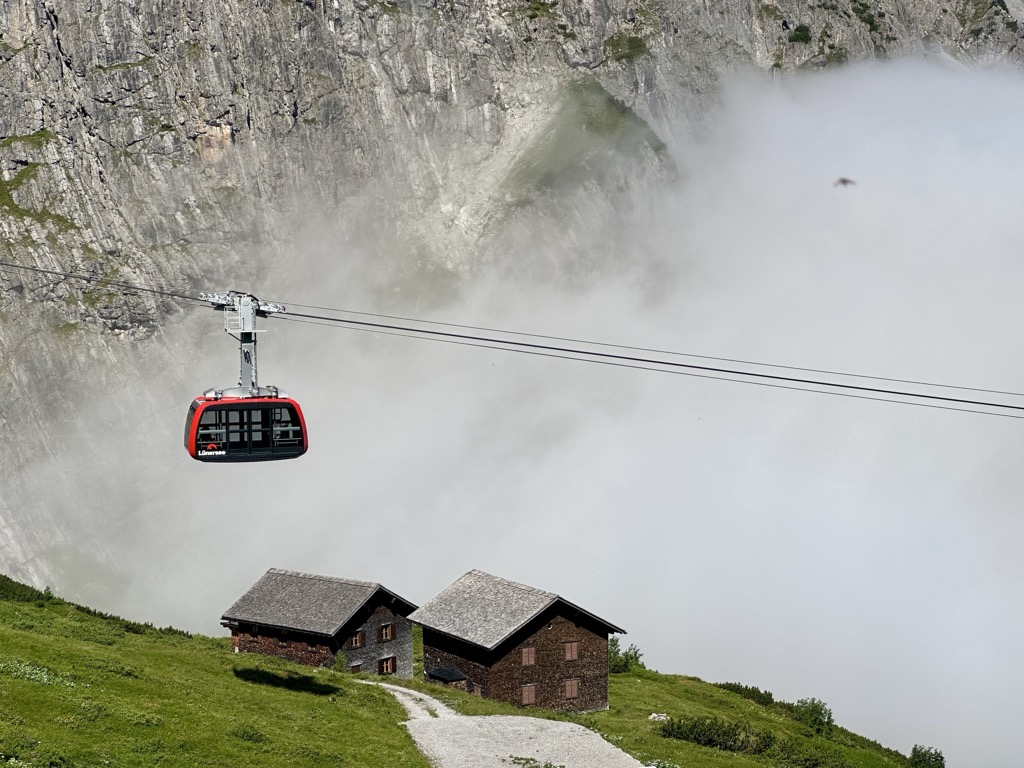
At the top of the Lünerseebahn sits the lake. It’s artificial, but that doesn’t detract from the beauty. The lake sits in a giant basin surrounded by glaciated high peaks, and the glacial runoff and snowmelt lend it an effervescent turquoise hue. At just under 2,000 m (6,600 ft), swimming is an option during hot days in late July and August. However, although the water looks tropical, understand that it’s going to be cold. Also, climbing down the steep embankment can be tricky, depending on how much water they’ve released from the dam. Either way, it’s an ideal stop to picnic or rest before and after the climb to Schesaplana.
The Hike
The hike up is long and challenging but straightforward. It feels every bit of 1,000 meters, and you’ll be happy to have the Totalphütte for much-needed sustenance on the ascent or descent (although I recommend the descent, after the grueling climb is over).
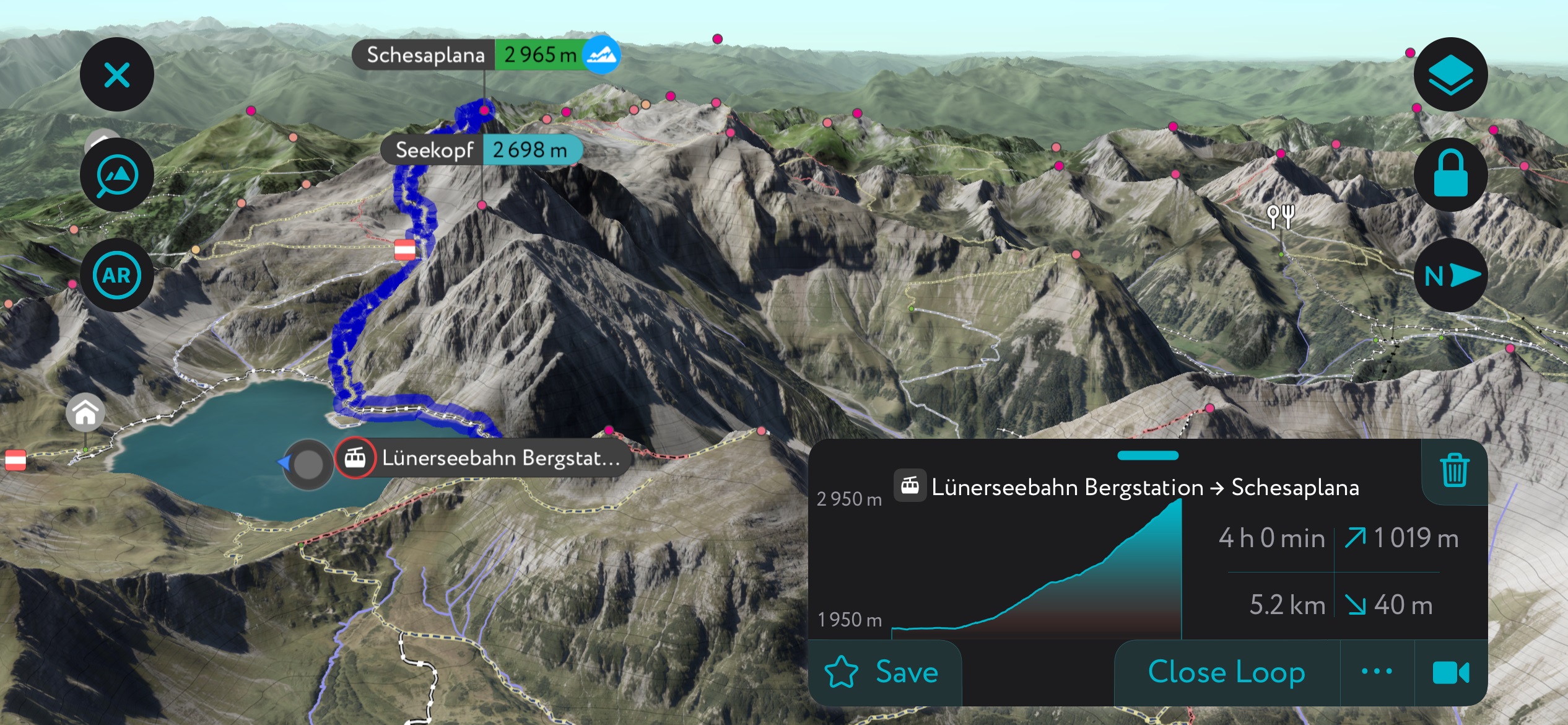
The route starts on an old service road but quickly transitions to a steep, switchbacking trail for the rest of the climb. For those of you reading this who doubt that your children could make 1,000 meters in a day, a stay at the Totalphütte could make the adventure possible by breaking up the climb and descent.
Even if the weather is spectacular down low, the summit can be cold and windy. Bring an extra layer, just in case!
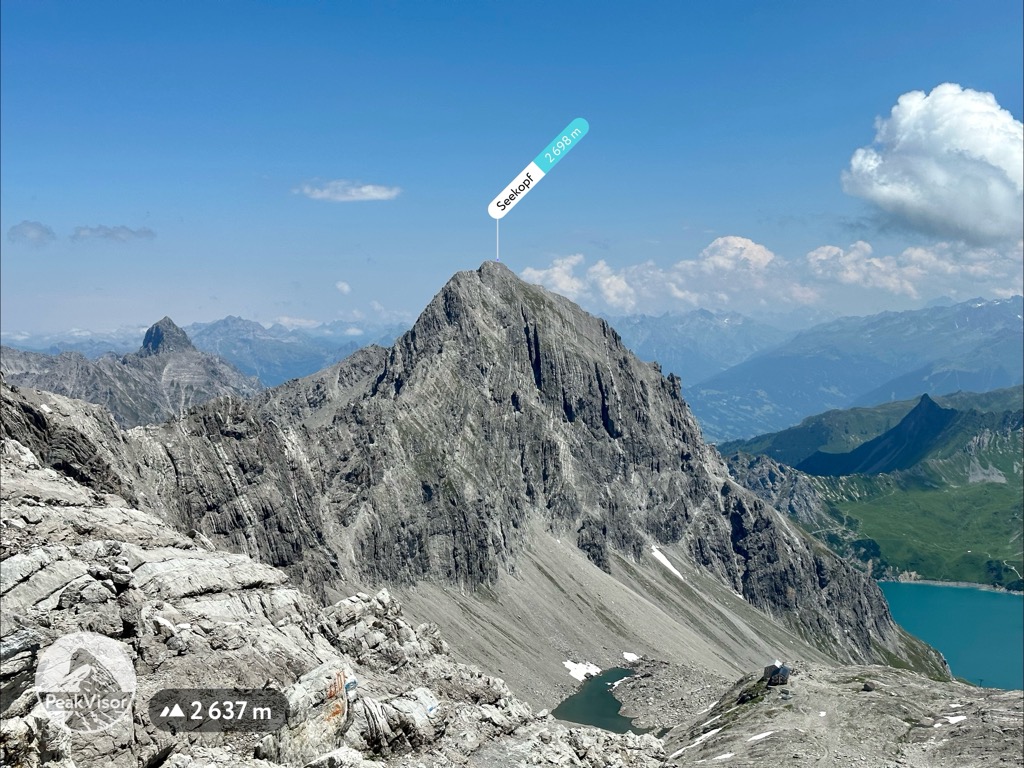
Snow Crossings
The trail can often have snow crossings during the first half of summer. The snow adds a challenge to the hike, although it’s usually not too bad.
During the summer of 2024, there will likely be significant snow to cross until at least August. We recommend that hikers come prepared with solid boots and a pair of microspikes. The spikes are lightweight, so you won’t regret it if you don't use them. Slushy snow will still be difficult to trudge through, but the spikes will neutralize any danger posed by hard or icy snow. They’re also easy to take on and off.
The webcam at the Lünerseebahn station will give you a rough idea of how much snow remains in the alpine.
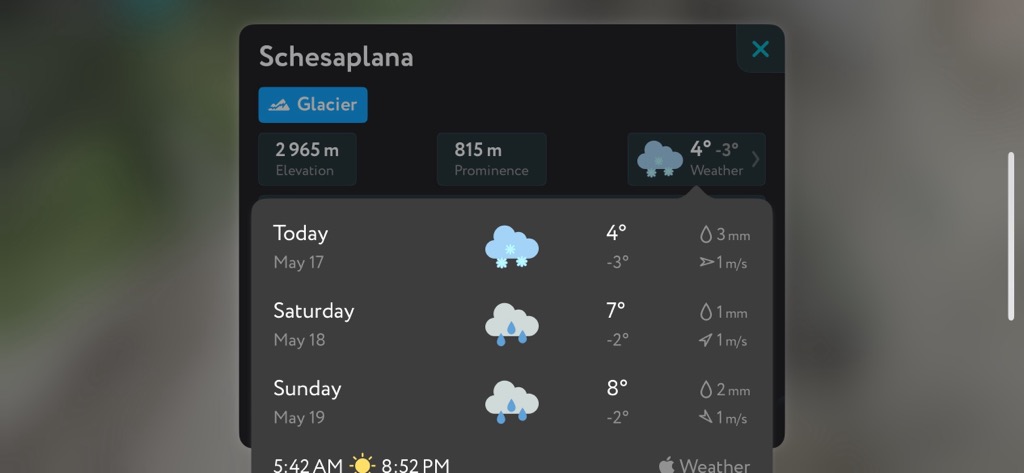
Glaciers
After summitting Schesaplana, you can sojourn along to the Mannheimer Hütte. The route requires crossing the remnants of the once-great Brandner Glacier. The glacier is little more than a remnant ice field, but glacier rescue gear, i.e., a harness, screws, etc., is still standard.
At this point, the most impressive aspect of the Brander Glacier is just how much it has melted over the past few decades.
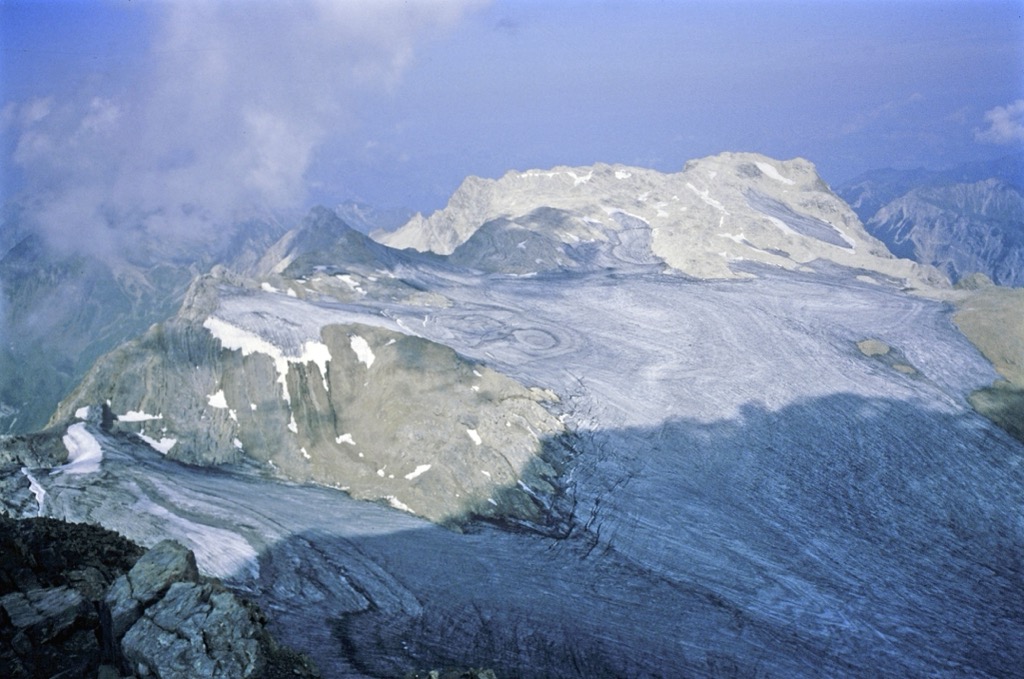
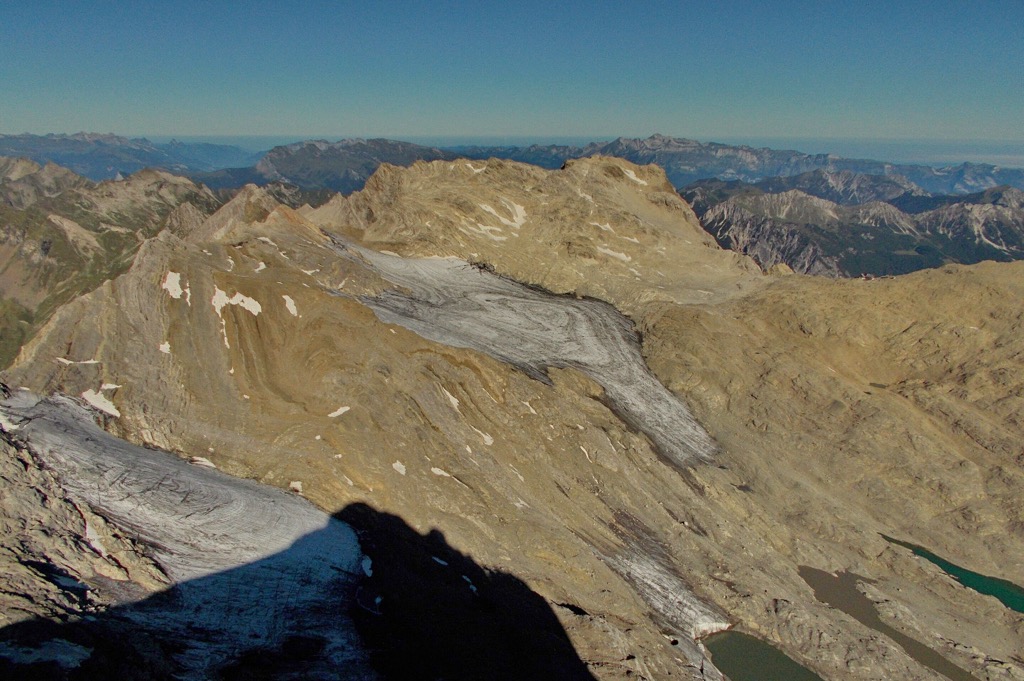
Still, any glacier ice is a beautiful sight. Because the glacier has receded so much, it poses relatively little crevasse or serac danger and is an excellent introduction to glacier travel.
Nearby Refuges
A handful of refuges operate in the area, but we’ll focus on the three most important around Schesaplana: the Totalphütte, Mannheimer Hütte, and Douglass Hütte.
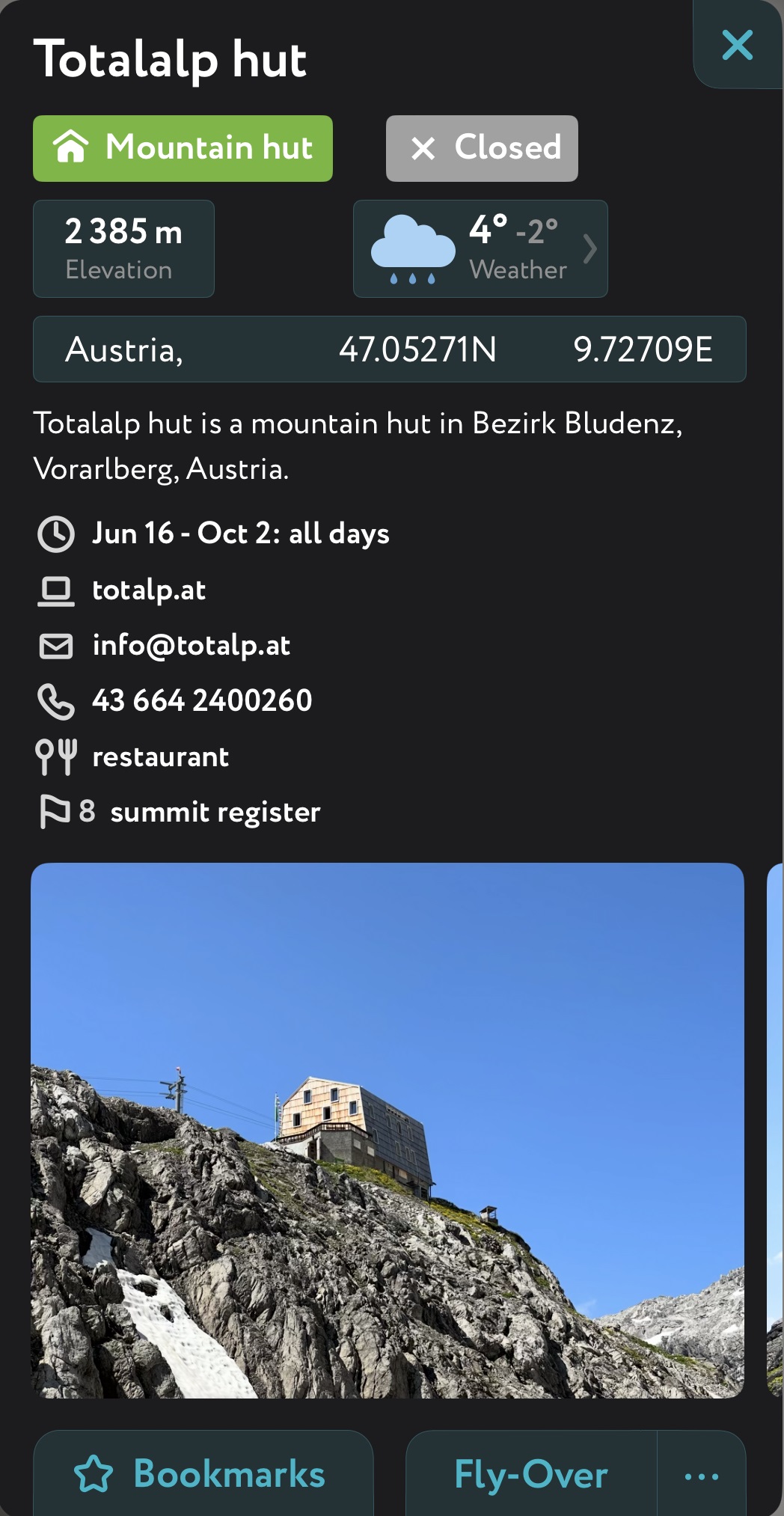
Totalphütte
The Totalphütte sits at 2,385 m (7,824 ft) on a small bench between Lünersee and Schesaplana. It takes about an hour and a half to reach the hut from the lake. After the hut, the hardest part of the climb awaits.
Totalphütte offers plenty of beds for those hoping to stay the night. Still, you have to make reservations beforehand. Alternatively, you can stop in for lunch and enjoy one of the incredible regional sausages with sauerkraut. Like many alpine huts, the Totalphütte deals only in cash, so have some ready, or you won’t be able to eat here!
Note that the hut doesn’t open until June 16th, 2024, despite the Lünerseebahn opening on May 18th. However, there will likely be too much snow to hike to this altitude anytime before then, so it works out.
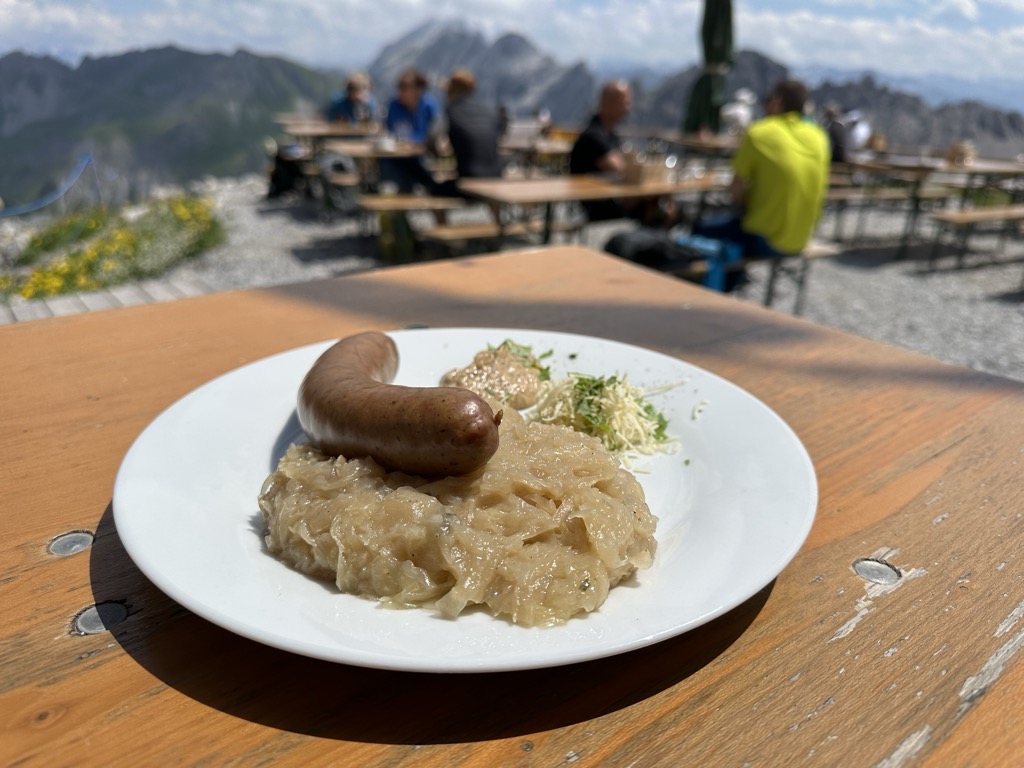
Mannheimer
The Mannheimer is the most adventurous hut on this list. It’s Schesaplana, full value. After summitting, you head west across the ridge and eventually north down the remaining ice field of the Brandner Glacier. The Mannheimer is perched upon the ridge at nearly 2,700 meters, with fantastic views of the Schesaplana, the Brandner, and the surrounding ranges. As I’ve mentioned, it’s not overly technical, but a standard glacier kit is requisite; this might not be one for the Heidi crowd.
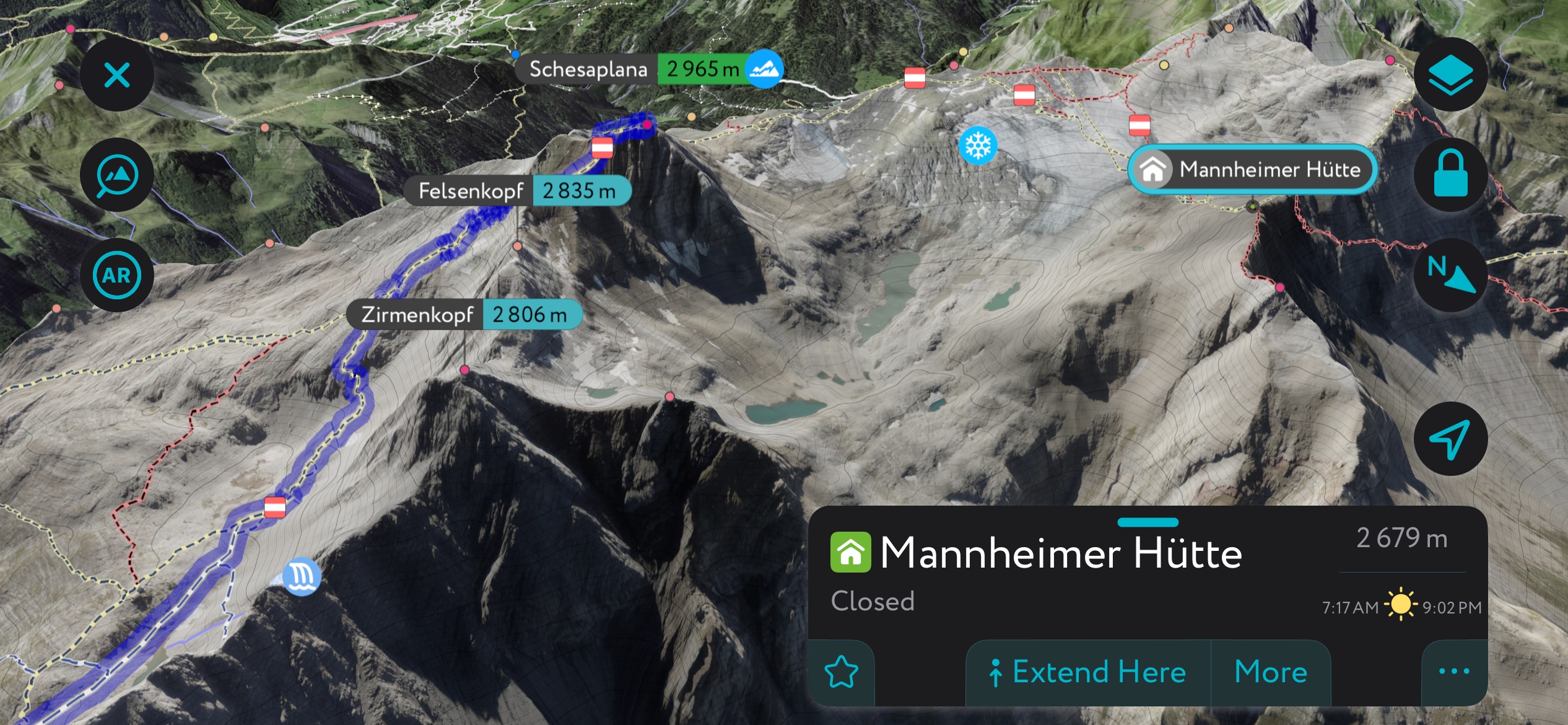
Douglass Hütte
The Douglass Hütte is right next to the Lünerseebahn station. It’s a popular stop for snacks, lunch, drinks, coffee, or sweets. The terrace offers panoramic views of the lake and surrounding mountains. There are beds here as well, for those who want the experience of staying at a hut but don’t want to walk.
Alternative Adventures
Maybe you’re coming here for multiple days and need more than just one itinerary. Perhaps there’s too much snow to do the Schesaplana. Either way, we’ve got you covered with some lower-altitude adventures. These hikes are all clear of snow well before the upper flanks of Schesaplana.
For the most non-committing adventure, you can traverse around the Lünersee on the old service road. It’s the only hike around here that gains minimal elevation.
In addition to the hikes below, you can survey the PeakVisor app for hundreds more ideas in the region. One thing is for sure: there’s no shortage of hikes around here, but you need to know where conditions are right.
Gafalljoch and Lüneregg
Besides just walking around the lake, Gafalljoch Pass is the most leisurely hike from the Lünerseebahn station. It starts with a traverse along the old service road until the Lünersee Alpe hut. From the hut, the trail heads uphill directly south. Hikers reach the pass first (joch means pass in German) and can head up another 50 m (165 ft) or so to reach the summit of the Lüneregg. In all, it’s about 300 m (1,000 ft) of elevation gain to the Lüneregg from the Lünerseebahn station.
Schafgafall
Schafgafall stands proud over the Lünerseebahn station and the lake. Like Schesaplana, it’s a steep and challenging itinerary, but it has less than half the elevation gain. The summit is only 2,414 m (7,919 ft), so snow will melt here well before Schesaplana.
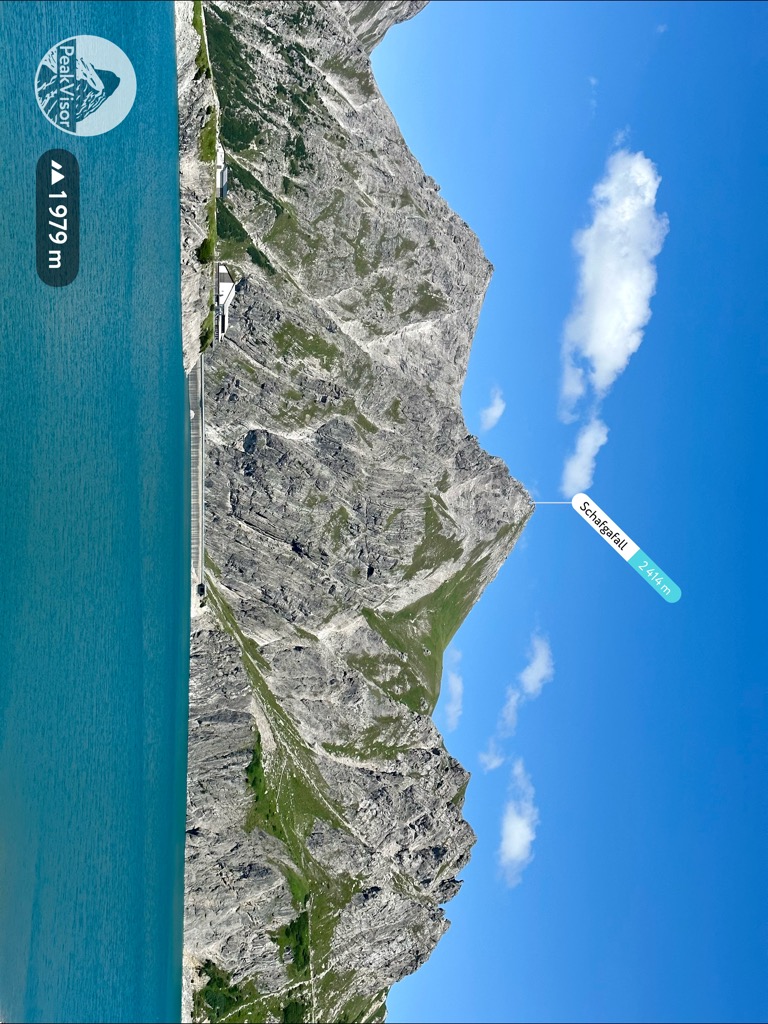
Zimba
Due to the story of Heidi, Schesaplana is undoubtedly the most famous mountain in the Rätikon. However, Zimba is the most iconic summit. It forms a perfect horn shape at the summit, and the west ridge is a classic. It’s no gimme, however; this is true mountaineering. It’s rated UIAA grade lll, so we’re talking about a few hundred meters of roped scrambling along the ridge to the summit.
